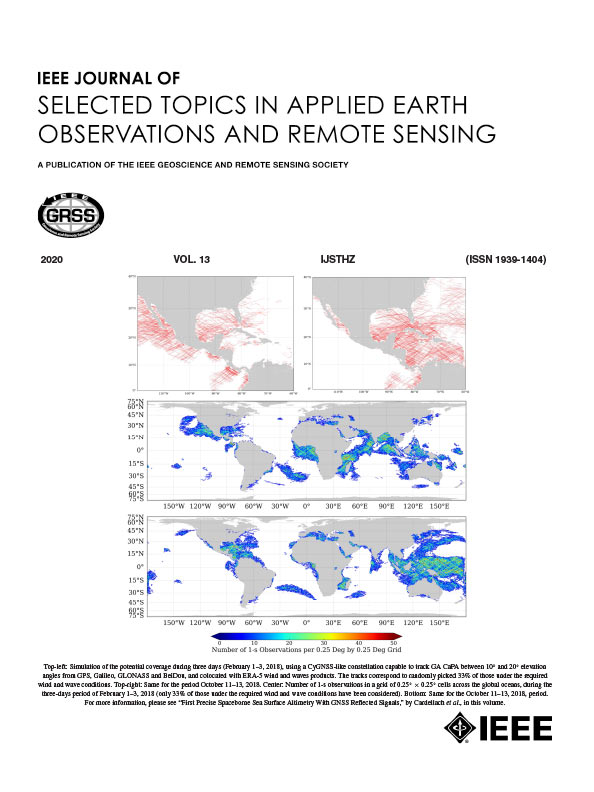萨姆-曼巴:结合适应段任何和曼巴模型的两阶段变化检测网络
IF 5.3
2区 地球科学
Q1 ENGINEERING, ELECTRICAL & ELECTRONIC
IEEE Journal of Selected Topics in Applied Earth Observations and Remote Sensing
Pub Date : 2025-08-22
DOI:10.1109/JSTARS.2025.3601739
引用次数: 0
摘要
遥感变化检测(RSCD)在环境监测、资源管理和土地规划等方面发挥着重要作用。然而,遥感图像通常涉及多种表面类型,并且这些类型之间的相似性和差异性使得复杂场景中的变化检测(CD)更具挑战性。因此,提取和整合复杂场景中的有效特征成为RSCD的关键问题。近年来,SAM2和Mamba在计算机视觉领域产生了重大影响,但要充分发挥其优势,还需要在遥感领域进一步研究。因此,本文提出了一个名为SAM-Mamba的两阶段CD网络。具体而言,我们使用SAM2作为编码器从遥感图像中提取关键特征,并进行初步解码生成混合提示,然后将混合提示传递给引导编码器(提示编码器)以生成准确稳定的特征边界。然后将这些边界与关键特征融合并传递给解码器。在解码阶段,我们整合了曼巴模型,该模型旨在有效地模拟长序列并捕获时空相关性。此外,为了提高捕获复杂变化的能力,我们设计了频率引导特征细化模块和动态特征融合模块。我们的SAM-Mamba在四个数据集上优于其他最先进的方法(例如,Intersection over Union和F1-score在LEVIR-CD+、WHU-CD和SYSU-CD数据集上分别提高了3.40%/2.96%、1.02%/1.07%和2.52%/2.42%)。SAM-Mamba的代码在https://github.com/lytwxyyyds/Sam-Mamba上公开发布。本文章由计算机程序翻译,如有差异,请以英文原文为准。
SAM-Mamba: A Two-Stage Change Detection Network Combining the Adapting Segment Anything and Mamba Models
Remote sensing change detection (RSCD) plays a crucial role in environmental monitoring, resource management, and land planning. However, remote sensing images typically involve multiple surface types, and the similarities and differences between these types make change detection (CD) in complex scenes even more challenging. Therefore, extracting and integrating effective features in complex scenes becomes a key issue in RSCD. In recent years, SAM2 and Mamba have made a significant impact in the field of computer vision, but further research is needed in the remote sensing domain to fully leverage their advantages. Thus, this article proposes a two-stage CD network named SAM-Mamba. Specifically, we use SAM2 as the encoder to extract key features from remote sensing images and perform preliminary decoding to generate mixed prompts, which are then passed to the guiding encoder (prompt encoder) to generate accurate and stable feature boundaries. These boundaries are then fused with the key features and passed to the decoder. In the decoding stage, we integrate the Mamba model, which is designed to efficiently model long sequences and capture spatiotemporal correlations. Furthermore, to enhance the ability to capture complex changes, we design the frequency-guided feature refinement module and the dynamic feature fusion module. Our SAM-Mamba outperforms other state-of-the-art methods on four datasets (e.g., Intersection over Union and F1-score are improved by 3.40%/2.96%, 1.02%/1.07%, and 2.52%/2.42% on LEVIR-CD+, WHU-CD and SYSU-CD datasets, respectively). The code of SAM-Mamba are publicly released at https://github.com/lytwxyyyds/Sam-Mamba .
求助全文
通过发布文献求助,成功后即可免费获取论文全文。
去求助
来源期刊
CiteScore
9.30
自引率
10.90%
发文量
563
审稿时长
4.7 months
期刊介绍:
The IEEE Journal of Selected Topics in Applied Earth Observations and Remote Sensing addresses the growing field of applications in Earth observations and remote sensing, and also provides a venue for the rapidly expanding special issues that are being sponsored by the IEEE Geosciences and Remote Sensing Society. The journal draws upon the experience of the highly successful “IEEE Transactions on Geoscience and Remote Sensing” and provide a complementary medium for the wide range of topics in applied earth observations. The ‘Applications’ areas encompasses the societal benefit areas of the Global Earth Observations Systems of Systems (GEOSS) program. Through deliberations over two years, ministers from 50 countries agreed to identify nine areas where Earth observation could positively impact the quality of life and health of their respective countries. Some of these are areas not traditionally addressed in the IEEE context. These include biodiversity, health and climate. Yet it is the skill sets of IEEE members, in areas such as observations, communications, computers, signal processing, standards and ocean engineering, that form the technical underpinnings of GEOSS. Thus, the Journal attracts a broad range of interests that serves both present members in new ways and expands the IEEE visibility into new areas.

 求助内容:
求助内容: 应助结果提醒方式:
应助结果提醒方式:


